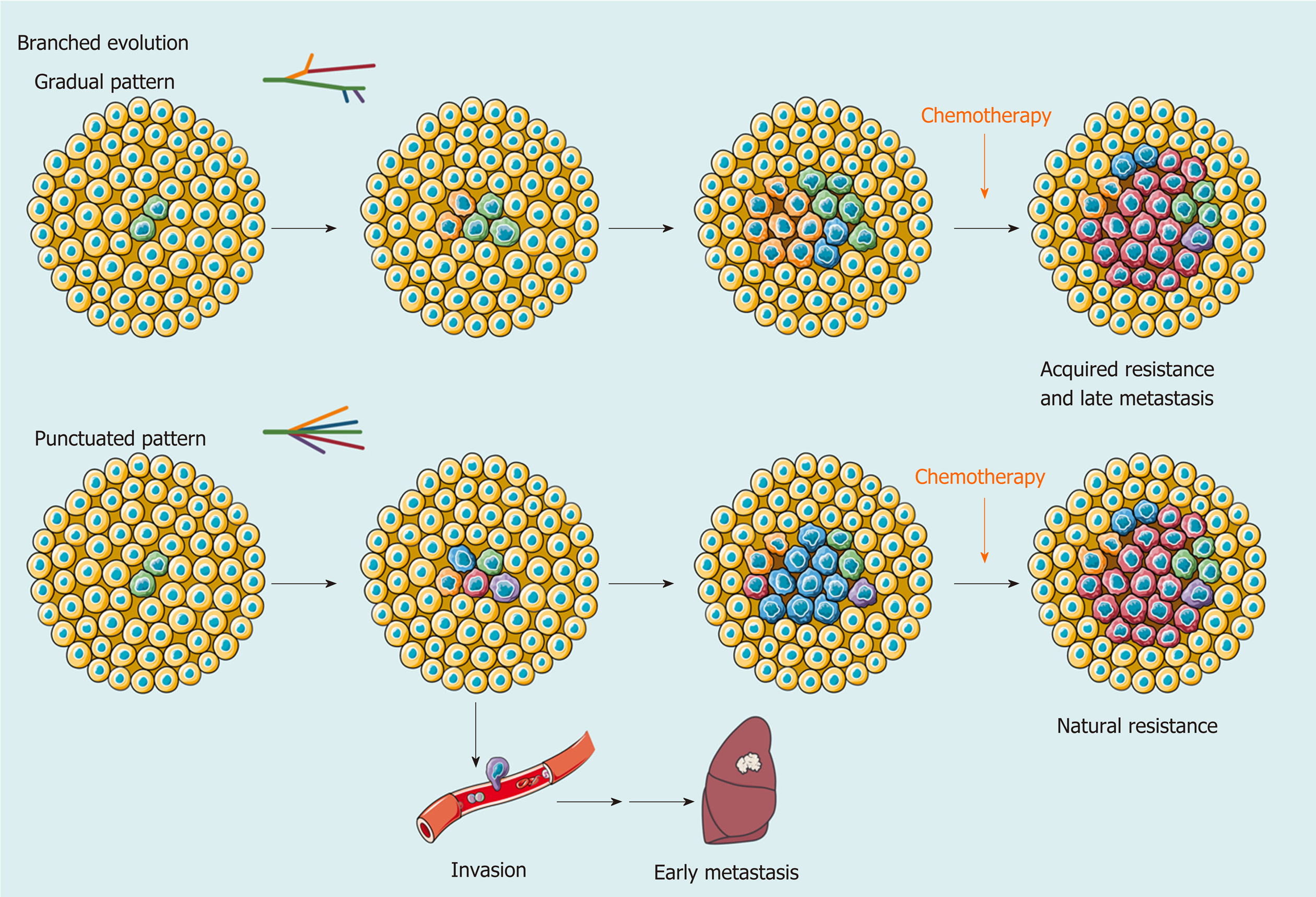Copyright
©The Author(s) 2020.
World J Gastroenterol. Jul 14, 2020; 26(26): 3720-3736
Published online Jul 14, 2020. doi: 10.3748/wjg.v26.i26.3720
Published online Jul 14, 2020. doi: 10.3748/wjg.v26.i26.3720
Figure 2 Branched evolution shapes intratumoral heterogeneity.
As a result of branched evolution, the genetic heterogeneous subclones may be generated through two different trajectories. In the gradual pattern, subclones increase gradually due to genomic instability or microenvironment changes, such as acquired drug resistance and metastasis caused by systemic therapy. However, the punctuated pattern, also known as big bang mode, supposes that all subclones already exist in early development of hepatocellular carcinoma (HCC). Different subclones obtain a survival advantage in spatiotemporally specific microenvironment and change the extent of intratumoral heterogeneity at a clonal level. This model provides an explanation for early metastasis and natural resistance of HCC in clinic.
- Citation: Zhang Q, Lou Y, Bai XL, Liang TB. Intratumoral heterogeneity of hepatocellular carcinoma: From single-cell to population-based studies. World J Gastroenterol 2020; 26(26): 3720-3736
- URL: https://www.wjgnet.com/1007-9327/full/v26/i26/3720.htm
- DOI: https://dx.doi.org/10.3748/wjg.v26.i26.3720









